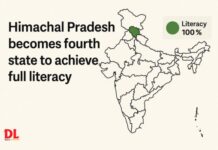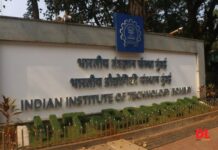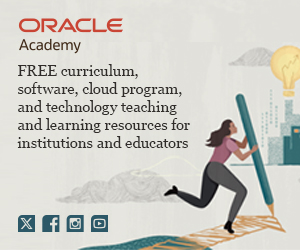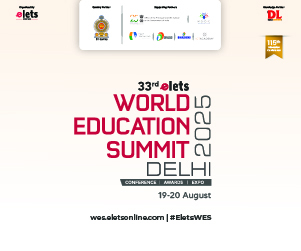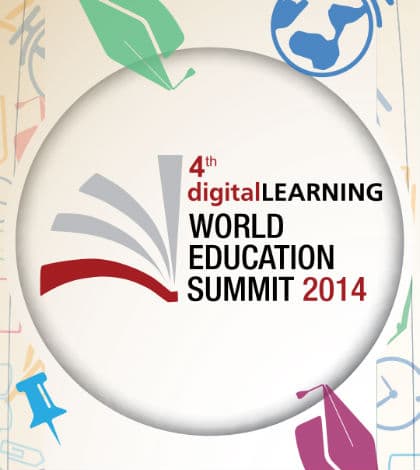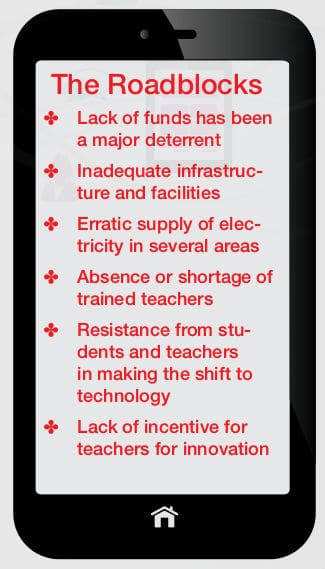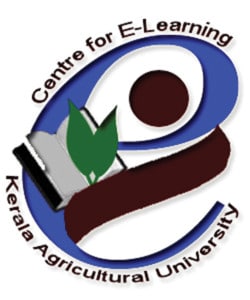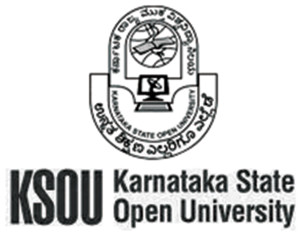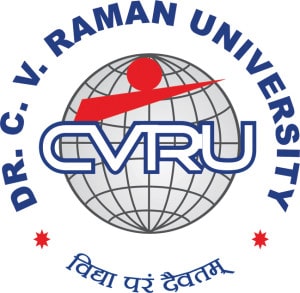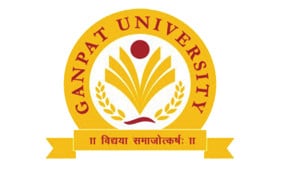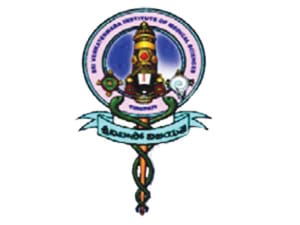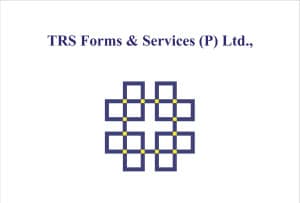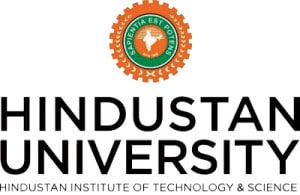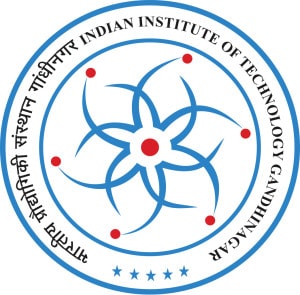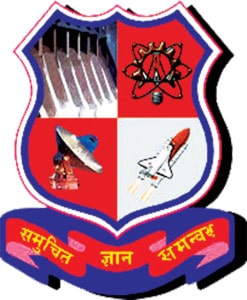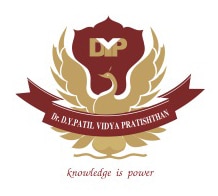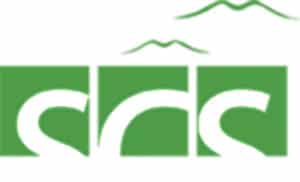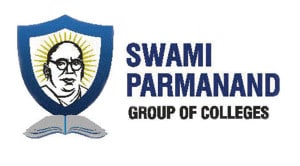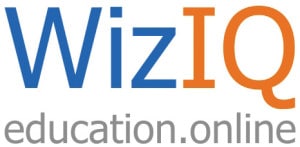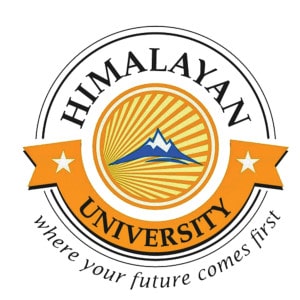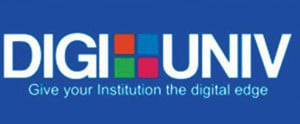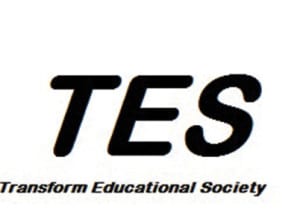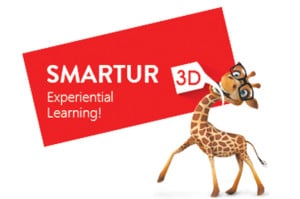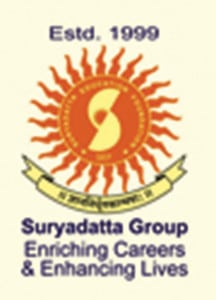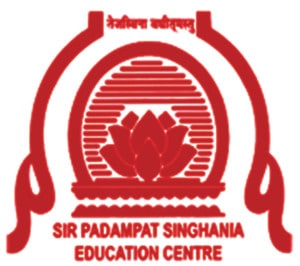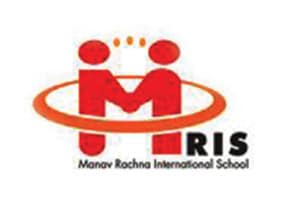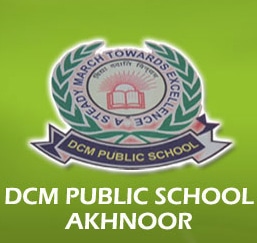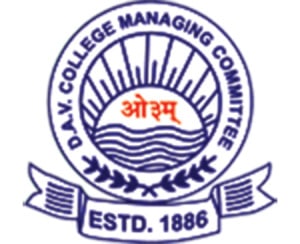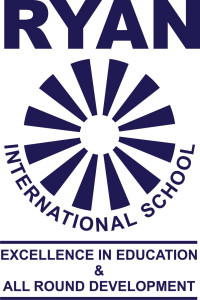MHRD plans 19 new institutes
Crawling Towards Innovations
 The recent Global Innovation Index (GII) report, 2014, places India at the 76th position among 143 economies around the world. In the current ranking, India has lost 10 positions from 66 in the previous year. The trend shows that India is continuously lagging behind other countries.
The recent Global Innovation Index (GII) report, 2014, places India at the 76th position among 143 economies around the world. In the current ranking, India has lost 10 positions from 66 in the previous year. The trend shows that India is continuously lagging behind other countries.
Table 1: India’ ranking over the years in the Global Innovation Index |
|||||||
| India | 2008 | 2009 | 2010 | 2011 | 2012 | 2013 | 2014 |
| Rank | 23 | 41 | 56 | 62 | 64 | 66 | 76 |
| Total Countries | 107 | 130 | 132 | 125 | 141 | 142 | 143 |
In fact, a deeper analysis of the available data suggests that many of the contemporaries are either improving or maintaining their positions in this innovation index. Table 2 shows the ranks of top 10 countries over the last four years. During this period, almost all the countries featured in the top 10 have been able to retain their places, nonetheless, there are ups and down in the ranks of some of the countries. Even among the emerging economies like the BRICS (Brazil, Russia, India, China, and South Africa), except India, all others have improved their positions. Brazil has moved up three places, the Russian Federation has moved up 13 places, China by six places, and South Africa by five places.
Table 2: Top 10 countries in Global Innovation Index |
||||
| Countries | 2011 | 2012 | 2013 | 2014 |
| Switzerland | 1 | 1 | 1 |
1 |
| Sweden | 2 | 2 | 2 |
3 |
| Singapore | 3 | 3 | 8 |
7 |
| Hong Kong (China) | 4 | 8 | 7 |
10 |
| Finland | 5 | 4 | 6 |
4 |
| Denmark | 6 | 7 | 9 |
8 |
| United States of America |
7 | 10 | 5 | 6 |
| Netherlands | 9 | 6 | 4 |
5 |
| United Kingdom | 10 | 5 | 3 |
2 |
Clearly, this poses two big questions – Is India slow at innovating? Or are other countries innovating faster? If the first assumption is true, we need to identify the reasons for our slow growth. If the later is true, we need to speed up our pace to catch up with other countries in terms of innovations. In both the cases, we need to develop an enabling ecosystem for innovation. The ecosystem of an innovation involves many subsystems. However, for innovations, two major support systems are very crucial. One is the government as a support system for promoting innovations in the country and educational institutions as another pillar for contributing through the required human capital.
But in India, there are several challenges with both these key subsystems. First of all, there are cultural issues in the present governmental structures and system for the creation of an enabling environment for doing business. These include enabling regulations required for starting business, growth of business, support for research and development and responsive system. The World Bank data from Doing Business report, 2013, shows that India is far away on these indicators. India stands at the 132nd position out of 185 economies across the world on the ease of doing business, 182nd on bureaucratic procedures and legal steps to get permits and 184th on enforcing contracts that obstruct smooth functioning of business ventures in the country.
Secondly, there are challenges related to enhancing the capacity of India’s human capital to match the world’s standards of research and innovation. There is no doubt that India produces and has produced some world class researchers and innovators. But the numbers are not very significant. Hence, in order to compete with the world-class researchers, there is a growing focus on increasing the number of researchers in India. For example, the Kakodkar Committee set up by the Ministry of Human Resource Development has suggested a ten-fold increase in the number of doctorates in the IITs in the coming years. Besides, there is a three-fold rise in the number of universities, and at the same time a five-fold rise in the number of colleges in the last ten years. There are now 700 universities and 35,539 colleges as of today in India. This has led to substantial increase in the number of doctoral positions in the institutions imparting higher education. But this rosy picture does not mean that all is well.
On the flip side, only one-fifth of the population has access to higher education in India. This is far below than most of the developed countries and even of the BRICS. Two recent reports, one by the NASSCOM in 2011 and the other National Employability Report 2012 by Aspiring Minds indicated that around 80 per cent of the engineering graduates were not employable. These issues lead to the debate on quantity versus quality in the higher education. In fact, there is a significant amount of learning available from various countries. China has significantly increased the number of doctorates (some 50,000 students across all disciplines) but is now facing issues related to the low quality of its graduates. Japan too has faced a similar crisis when it focussed on increasing the number of doctorates and postdocs. For instance, in 2009, the Ministry of Science and Education had to offer companies around US $47,000 each to employ its 18,000 unemployed postdoctoral students. This is mainly because the number of students entering into higher education dropped and academic institutions did not want more staff. Even in the United States, there are similar issues where doctorates are facing challenges to be employed in academics as well as the industry. So, what does it all indicate? There are several questions to ponder over – Is India running after producing graduates with higher degrees? Will these degree holders be employable in the future? And if yes, will they contribute in the national research and development process which eventually can match world standards?
Considering these situations, perhaps developing a suitable ecosystem for innovations can help in addressing both these issues i.e. cultural changes and capacity of human capital. Cultural issues in the system require mindset change and improving governance processes. Change in mindset, as we all know, requires time, where people need to act and then believe or vice versa. For immediate action, making processes related to setting up of businesses, regulatory mechanism etc. online with lesser turnaround time can be a good starting point. Capacity issues with regard to human capital require more intense work. Firstly, low enrollment rate at higher education indicates the need for improving the primary and secondary education. Preparing the feeders (i.e. primary and secondary schools) with appropriate resources and technology is a challenge but not impossible. Higher education too is in need of an overhaul to make graduates employable. This can be taken care by improving the teaching and research standards in higher education in the country. For this, we need to focus on improving the quality of doctoral level students through rigorous research process and quality of the output. Developing a zero tolerance policy for infringement of copyright or intellectual property rights is one such step to improving the quality of output. I still remember an incident when I found a book published by a senior reader of a state university to be a replica of another old book by a retired renowned professor of the same university. Such incidents can be dealt with by commissioning an online portal for reporting of such infringement and later designing a probing mechanism with considerable anonymity to the whistle blower. Developing an online system of tracking and publishing data of doctoral students – their research topics, progress, publications standards etc. across the country – can be another step leading to a more transparent system.
Though there are many big challenges, such small changes can open up new vistas for innovators in India. As one of the growing economies of the world and in order to compete with international benchmarks, India needs a serious focus on creating an enabling environment for innovations.
About the author
Gaurav works in the social development domain and has an avid interest in social innovations, especially educational innovations. The views expressed here are personal.
Future of Education Redefined :: September 2014
EDITORIAL
COVER STORY
Grassroots to Galaxies
Education for Empowerment
Education Beyond Stereotypes
Towards a Smarter Generation
ICT With a Mission
Minority Education – The Road Ahead
WORLD EDUCATION SUMMIT AWARDEES
LEAD FEATURE
Looking Down the Barrel
‘Limited Impact of ICT on Quality of Education’
The Challenge Lies in the Mindset
‘Progress Slow Due to Lack of Funds’
‘Technology is Empowered by the Teacher who Uses it’
INDUSTRY SPEAK
‘Strong Focus on the Enterprise Space’
‘Education has to Converge on a Device’
ADVERTORIALS
e-Solutions for Academic Excellence
Grassroots to Galaxies
Over 900 people including academicians, policy makers, heads of schools, colleges and institutions of higher learning, corporates and education entrepreneurs stepped aside from their daily grind and got together at Hotel Eros in New Delhi on August 7 and 8 to participate in an initiative aimed at transforming education through innovation.
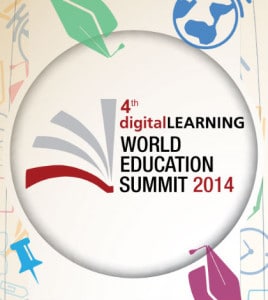 Aimed at disseminating innovations in ICT, the World Education Summit 2014 was received with immense enthusiasm for the fact that it successfully managed to engage several stakeholders in a dialogue on the path ahead for education in India. Apart from deliberating upon technological trends and the use of ICT in education through parallel tracks on higher education and schools, the two-day mega event also saw many firsts. In a first of its kind exercise on the national level, the WES 2014 saw a special focus on minority education in India. This special session, which was held in collaboration with the National Commission for Minority Educational Institutions (NCMEI), saw representation from minority educational institutions across India. A special issue of digitalLearning on minority education was launched by Dr Najma Heptulla, Union minister for Minority Affairs in India. In another first, the higher education track saw some of the greatest minds from the Indian Institutes of Technology get together to discuss the National Mission for Education through ICT (NMEICT). These professors from the IITs also serve as project directors for NMEICT and had valuable experiences to share with the audience. In all, the event focused upon getting India at par with the demands of today’s knowledge-based society and the ways that technology can help India reap the future benefits of its demographic dividend.
Aimed at disseminating innovations in ICT, the World Education Summit 2014 was received with immense enthusiasm for the fact that it successfully managed to engage several stakeholders in a dialogue on the path ahead for education in India. Apart from deliberating upon technological trends and the use of ICT in education through parallel tracks on higher education and schools, the two-day mega event also saw many firsts. In a first of its kind exercise on the national level, the WES 2014 saw a special focus on minority education in India. This special session, which was held in collaboration with the National Commission for Minority Educational Institutions (NCMEI), saw representation from minority educational institutions across India. A special issue of digitalLearning on minority education was launched by Dr Najma Heptulla, Union minister for Minority Affairs in India. In another first, the higher education track saw some of the greatest minds from the Indian Institutes of Technology get together to discuss the National Mission for Education through ICT (NMEICT). These professors from the IITs also serve as project directors for NMEICT and had valuable experiences to share with the audience. In all, the event focused upon getting India at par with the demands of today’s knowledge-based society and the ways that technology can help India reap the future benefits of its demographic dividend.
Looking Down the Barrel
Technology has made critical inroads into our lives and there’s a concerted push from the government to integrate it with higher education in India. Despite a realisation of benefits of technology-enabled learning, there are challenges that need to be urgently addressed. Parimal Peeyush of ENN delves into the details
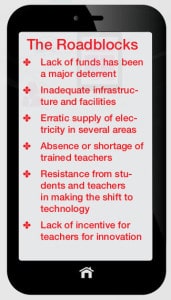 There has been a remarkable shift in the way education is being imparted across the globe. Technology, which for long had been the exclusive premise of realms above the understanding of general masses, has infiltrated our daily lives to an extent that one could not have imagined a few years ago. Far from being alien to it, the education sector has been one of the biggest adopters of the use of information and communication technology (ICT) as a tool for delivery.
There has been a remarkable shift in the way education is being imparted across the globe. Technology, which for long had been the exclusive premise of realms above the understanding of general masses, has infiltrated our daily lives to an extent that one could not have imagined a few years ago. Far from being alien to it, the education sector has been one of the biggest adopters of the use of information and communication technology (ICT) as a tool for delivery.
Innovation, for long a hallmark of good education, is now transforming the way education is being imparted worldwide. With a revolution in the way information is collected and disseminated, ICT is catching up as a medium of choice for educators in India. Several senior academicians that we got in touch with agree that the benefits of the use of technology are multifold for students and teachers alike.
“Today, we are faced with the challenge of providing opportunities to the youth to receive appropriate education and unfold their full potential for meeting their aspirations. We recognise that technological tools, particularly computer, digital tools, Internet, etc., have immense potential to enable students acquire knowledge and skills necessary to succeed in the competitive global market,” says K P Mishra, Vice Chancellor, Nehru Gram Bharati Vishwavidyalaya (NGBU).
For the uninitiated, there has been a concerted push from the Ministry of Human Resource Development (HRD) towards adopting technology-enabled learning and a separate division has been created for this purpose under the Department of Higher Education. Another major push in this direction has been the launch of the National Mission for Education through ICT (NMEICT). Under this mission, the National Video Server of the National Programme on Technology Enhanced Learning (NPTEL) was launched at IIT Madras in February 2011. The video server, aimed at making the entire NPTEL content available to students across universities and colleges online, is connected to 1 Gbps link of the National Knowledge Network (NKN) and to 155 Mbps link to the Colleges’ Virtual Private Network (VPN).
The realisation that technology is relevant to the field of education and that it is growing in importance in today’s knowledge-based society is clearly present in all quarters. “An average person now changes at least 10 professions in his/her lifetime. In such a scenario, what is it that we can teach to enable our students to be future-ready?” asks Sunaina Singh, Vice Chancellor, English and Foreign Languages University (EFLU). The benefits of the use of ICT tools in education have also been debated and discussed at various forums and within institutions extensively.
What has perhaps been missing in current times is the willingness and the ability to address the challenges that are hampering the implementation of technology-enabled learning. This significant innovation in education is disruptive and expensive and many institutes today are finding it tough to deal with the lack of required facilities and the high costs associated with it. Regulatory hurdles, erratic electricity supply and a mindset among teachers and students that resists change are some other bottlenecks that several institutions across India face in terms of implementing the policies devised by the government to encourage and facilitate technology enabled learning.
“We are all geared up to deliver tech-enabled education, but often face difficulties in terms of adoption,” says Nupur Prakash, Vice Chancellor, Indira Gandhi Delhi Technical University for Women.
Insiders tell us that there is also a lack of awareness among the institutions about the programmes of the government in this regard. Monitoring it is also a major challenge as there is no concrete data to suggest how far digital learning techniques have penetrated across in stitutions and colleges across the states. “In my experience, there are a few snags that need to be tackled for enhancing the impact of ICT on quality improvement of education,” observes K P Mishra of NGBU. “For example, infrastructure and manpower in various universities differ markedly. Therefore, plans of implementation of the ICT programme have to be executed in groups of universities with similar background and encourage them to catch up with better placed institutions,” he adds. Among other issues, he also calls for devising a plan for one-time special funding assistance to establish and improve infrastructure for technology-based teaching, training, learning and research for the accelerated implementation of NMEICT.
Infrastructure and monetary issues only constitute a part of the problem. The major issue lies in the poor understanding of technology among teachers as well as students. “There is the danger of dwelling too closely on the use of technology and tools,” says Sunaina Singh of EFLU. “What is more essential is a change in our attitudes to the use of technology in the classroom, a commitment to think of education in a new perspective – one that is no longer handed down by the teacher, but is more collaborative and interactive in nature; one that is not compartmentalised, but aimed at developing transferable skills,” she suggests.
The Roadblocks
- Lack of funds has been a major deterrent
- Inadequate infrastructure and facilities
- Erratic supply of electricity in several areas
- Absence or shortage of trained teachers
- Resistance from students and teachers in making the shift to technology
- Lack of incentive for teachers for innovation
These issues form a challenge for the government as well. Speaking of the implementation of ICT-enabled education in India, Praveen Prakash, Joint Secretary, Department of Higher Education and Mission Director, NMEICT, says that the major challenge of the mission is to enable and empower teachers in adopting a technology-enabled environment. “We have to support teachers in acquiring skills in e-content development and make them adept in the emerging modes of technology-based delivery,” he observes. “Another area that requires urgent intervention is to put in place a policy acceptable to all stakeholders for integrating technology-enabled learning as a part of curriculum and recognising degrees earned through the online mode,” he adds.
His observations do hold true. Today, teachers who have become used to conventional methods find it tough to deal with this change. Moreover, lack of incentive to adopting these techniques is also missing from our existing framework and teachers, as a result, find it difficult to devote the time required for learning and adopting new age tools of teaching. There needs to be an overall change in the mindset of the academicians for promoting the use of these technologies within the teaching fraternity and more importantly, among students.
The world a decade from now will not demand the same skill sets that keep us going today. Moreover, with the demographic dividend that India is poised to be sitting on in the coming two decades, there will be a huge demand for quality manpower. This would require present students to be ready to face the demands of coming times. Technology- enabled education is an enabler in this direction and the benefits we are able to reap will depend upon how quickly we understand its effective and correct use and adapt to it. One must not forget that over 65 per cent of India still lives in villages and it is here that this revolution will have to reach to make the right impact if India has to be future ready. In a scenario where education still remains elusive to a majority of the population, the benefits of technology will have to be harnessed in expanding the reach of education and bringing a huge population into the mainstream. Running away from technology is no more the answer. Technology is here to stay and the onus of reaping its benefits now lies with the teachers and institutions. The sooner we get it, the better it will be for our society, our economy and our country as a whole.
‘Limited Impact of ICT on Quality of Education’
There are many challenges that must be tackled for effective implementation of ICT in the education programme, believes K P Mishra, Vice Chancellor, Nehru Gram Bharati Vishwavidyalaya (NGBU). In an interview to ENN, he also talks about the issue of funds, infrastructure and the unintentional resistance of stakeholders to change

Vice Chancellor, Nehru Gram Bharati Vishwavidyalaya (NGBU)
As a university with the objective to improve the access of higher education for rural areas, how relevant do you find the use of technological tools in education in today’s time and age?
Major population of India lives in rural areas and education has to reach remote and inaccessible places. Plans have to be worked out to engage youth from urban as well as rural areas in nation-building through proper education. The focus of our endeavours is to improve upon the quality and access of higher education to students from rural India. Without doubt, technological tools hold the key to achieve these objectives effectively. At this point in time of globalisation, new opportunities have been created but competition has also become tougher. This demands optimisation of talent promotion through innovation in education and training and requires reforming and strengthening of our education system – from primary to university level – to match global standards. We are faced with the challenge of providing opportunities to the youth to receive appropriate education and unfold their full potential for meeting their aspirations. We recognise that technological tools, particularly computer, digital tools, Internet etc. have immense potential to enable students acquire knowledge and skills necessary to succeed in the competitive global market.
While setting up the university, late Pt. Jawahar Lal Nehru had noted the importance of vocational, technical and professional education. What role does technology play in achieving these objectives and how well is your university geared up for tech- enabled learning?
Universities are regarded to be the temples of knowledge. India’s first Prime Minister Pt Jawahar Lal Nehru had recognised and placed due importance to vocational and professional education as it provides the confidence and capability for winning jobs and setting up enterprises. Education is meaningless if it cannot help earn a living to meet the necessities of life. In the present time, the advent of information and communication technology has facilitated the process of teaching and learning in more ways than one. Education has witnessed a revolution in the approach and methods of teaching. A greater opportunity of interactive teaching has become possible and teachers can design and deliver course material to students in an interesting and effective manner. We have made sincere efforts to employ ICT in teaching programmes for the benefit of students and teachers by providing computer labs, Internet facilities, digitisation of library and innovations in teaching. Many initiatives have been taken and upgradation of technological facilities is a continuous process in our future plans.
In recent years, there has been a concerted push from the HRD ministry at the Centre towards technology enabled learning. Are you aware of the initiatives and how well have they progressed at your institute?
We are fully aware of the HRD minis- try’s push for introducing technology enabled learning in higher education. I am a strong supporter of the government’s National Mission for Education through ICT (NMEICT). In fact, NGBU has actively followed the implementation of plans and programmes of the central government provided from time to time. We are particularly interested in increasing utilisation of information technology in admission, examination and evaluation processes. We have also started an orientation programme of training the new and existing faculty through computers and power point presentations to make them technol- ogy savvy and upgrade their professional knowledge and class room teaching meth- ods. The focus is to integrate technology in teaching and transform the traditional class room teaching into a technology- driven learning and practice centre.
What in your view is the impact of the use of technological resources on the quality and accessibility of education? How has it helped the students and faculty at your institute?
In my opinion, quality of teaching is the core strength of university educa- tion which, unfortunately, has shown a declining trend in past years in our country. It is hoped that MHRD would take note of this decline and take cor- rective measures. Use of technology has enormous scope to improve quality and accessibility of education, especially in rural areas. There has been a limited impact of ICT on quality improvement of education but the efforts are con- tinuing. In my experience, there are a few snags that need to be tackled for enhancing the impact. For example, in- frastructure and manpower in various universities differ markedly. Therefore, plans of implementation of the ICT pro- gramme have to be executed in groups of universities with similar background and encourage them to catch up with better placed institutions. Among other factors, unreliable availability of elec- tricity from commercial supply system and inadequate power through genera- tor system frequently disrupt the plans of technology teaching and practice, thereby disturbing the schedules and adversely affecting the teaching pro- gramme. Teaching standards and ac- cessibility would substantially improve after we make dependable delivery of teaching from centralised destinations assuring students quality lesson mate- rial designed by experts in the subjects.
“The major problem faced in implementation of technology-based teaching programmes is the unintentional resistance of stakeholders to change”
Are there any other initiatives that you have streamlined with regard to tech-enabled learning?
We have planned a few initiatives for technology based teaching and learning in our campus. For example, we are keen to implement our plans for transforming the classroom experience by replacing traditional passive lectures with active learning experiences based on informa- tion technology. In addition, it has been in our active plans to motivate students to conceive, initiate, and implement projects utilising information technol- ogy in their fields of study. We believe that by allowing students to employ and practice technology in a free atmosphere would prod them to thinking of creating new software and services for future.
What are the challenges that you have faced with regard to the introduction of ICT in education? Any plans to engage with private players to take it to the next level?
There are many challenges that must be tackled for effective implementation of ICT in the education programme. In this context, the merit of investment in creat- ing infrastructure for implementation of technology is obvious. But, often such in- vestments receive lukewarm response by the university fund allocation Committee. It may be advisable to plan for one- time special funding assistance to estab- lishing and improving infrastructure for technology-based teaching, training, learning and research for accelerated implementation of NMEICT. In my expe- rience, the major problem faced in imple- mentation of technology-based educa- tional programmes is the unintentional resistance of stakeholders to change. Passive approach and lack of receptiv- ity are major hurdles which, of course, stems due to traditional mindset. It can, however, be tackled with patience and tactful handling. I feel fortunate to have identified and involved willing faculties to implement new plans of technology based teaching, training and research activities. However, it was more than satisfying to witness enthusiastic partici- pation of young students in technology based courses and innovative research activities in Ph.D. programme. I strongly believe that participation of private play- ers in education supported by technol- ogy would push the ICT programme to- wards a faster pace, wider acceptability and better academic participation.
‘Technology is Empowered by the Teacher who Uses it’
Being literate in the traditional sense is no longer sufficient for success in the 21st century workplace, believes Sunaina Singh, Vice Chancellor, English and Foreign Languages University (EFLU). In an interaction with ENN, she says that apart from students benefitting from the use of technology, there is a perceivable change in teachers’ attitudes towards teaching, knowledge and learning
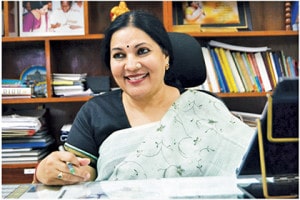
Vice Chancellor, English and Foreign
Languages University (EFLU)
As an institute involved in teaching and training of languages, how relevant is the use of technological tools and ICT in the field of education for you?
As a teacher, I am aware of the constantly shifting paradigms in education – many of us are caught in a situation where digital immigrants teach digital natives. It would not be wrong to say that many of our students are more tech-savvy than the teachers, and comfortable with their own set of digital practices. To reach out to a group like that, we need our teachers to engage with ICT and new tools. But more importantly, as academicians we need to be aware that technology is no longer a ‘nice-to-know skill’, it is an ‘essential- to-know skill’. Being literate in the traditional sense is no longer sufficient for success in the 21st century workplace. Newer definitions of literacies are being explored and hailed globally as essential workplace skills. Digital literacy that goes beyond basic skills to include information, technological, and visual know- how, is one such core essential skill.
There has been a concerted push from the HRD ministry towards technology enabled learning. What is the progress at your university?
Following directives from the MHRD, and based on the observations made by the Honorable President and recom- mendations made during the Vice Chancellor’s Conference 2013, our University has consolidated and strengthened its initiatives in the use of technology in education to assist both students and teachers. There is more e-content being generated both in our distance mode programmes and also as support to face- to-face classrooms. Conscious adoption of web 2.0 tools by many of our teach- ers has made the teaching-learning process more seamless. EFLU has always laid emphasis on providing access to learning opportunities for all students. An area emphasised by my administration was enabling our differently-abled students to move forward with ease in e-learning.
Are there any other initiatives that you have streamlined with regard to tech-enabled learning?
Apart from providing empowering technology tools to our Disabled Cell, we have made significant efforts in restructuring courses in terms of content and delivery, to make them simpler, yet more efficient. The EMMRC, School of Distance Education and several programmes in foreign languages are using technology both as an agent for content presentation as well as a medium of delivery. Our teachers welcome opportunities for content updation of face-to-face courses to ensure their currency – some of our courses deliver the latest in the field of ICT in language sciences like Use of web 2.0 tools, Game theory, Digital literacies, Digital artefacts etc.
What in your view is the impact of the use of ICT on the quality and accessibility of education? How has it helped the students and faculty at your institute?
Technology makes possible concepts that we have always upheld as educators, like learner autonomy and lifelong learning. It facilitates a move away from a perception of education as something that happens within classroom walls at specific times and allows individualised learning in the truest sense. Many of our course instructors use social networking sites and 2.0 tools like wikis, penzus, blogs, voicethreads, etc. The af- fordances offered by such digital learning environments include multiple entry levels and individualised learning paths. Additionally, they also allow multimodal assessment patterns, promote higher or- der thinking skills, encourage creativity and facilitate collaborative and interactive learning paradigms. And it isn’t just our students who have benefitted, there is a perceivable change in teachers’ at- titudes towards teaching, knowledge and learning; our teachers have started thinking of newer pedagogies, reinter- preting research methodologies, and designing new modes of assessment.
Any plans to collaborate with private players?
Several linkages to establish collabora- tive programmes with industry in the field of language research and pedagogi- cal innovations are already in place and more are being planned. The intention is to introduce multidisciplinarity and interdisciplinarity to our programmes so that our students gain opportunities to ideate and innovate. A second area where we would benefit interfacing with industry is in developing translit- eracy skills in our students. The ability to acquire and present information in multiple forms, I feel is best achieved in authentic contexts. We are seeking industry partnerships for such digital- ly-situated student development pro- grammes.
What are your priority areas in the near future?
Scoping future trends and opportunities, I think as educators and administrators we need to think of ways to promote and support digital learning in continuous and sustainable ways. My goal is to think of embedding digital literacy as an edu- cational approach and a norm rather than an exception restricted to a work- shop or a few courses. I read a survey report somewhere that an average per- son now changes at least 10 professions in his/her lifetime. In such a scenario, what is it that we can teach to enable our students to be future-ready? There is the danger of dwelling too closely on the use of technology and tools. As the head of a language university I find this unrewarding. Instead, what is more es- sential is a change in our attitudes to use of technology in the classroom, a com- mitment to think of education in a new perspective – one that is no longer hand- ed down by the teacher, but one that is more collaborative and interactive in na- ture; one that is not compartmentalised, but aimed at developing transferable skills. Now, all these mean incorporat- ing newer elements into teacher train- ing programmes – we need to encourage the teacher to come out of his/her com- fort zone and address teacher anxiety. We plan to design confidence-building sessions to demonstrate that technol- ogy can never replace teachers, that technology is empowered by the teacher who uses it. Which is why I feel blended classrooms should be given priority. Secondly, I am also interested in providing authentic contexts for practice of digital literacy skills so that our students are in- dustry-ready by the time they complete their education. And finally, we would also like to build on our online courses and encourage wider dissemination of courses and lectures to make them ac- cessible to the general public.
The Challenge Lies in the Mindset
Although the university is all geared up to deliver tech-enabled education, difficulties often arise in its adoption, says Nupur Prakash, Vice Chancellor, Indira Gandhi Delhi Technical University for Women. In an interaction with ENN, she says that the bottlenecks arise either in the form of infrastructure or on account of the closed mindset of teachers and students who still believe that the chalk and talk method is the best mode of education delivery

Vice Chancellor, Indira Gandhi
Delhi Technical University for Women
As a premier institute for women in the field of technical education, how well do you think has the university succeeded in addressing the gender gap observed in the workforce at tech companies?
Every year, 300 women engineers pass out from this University and get placed in prestigious Indian companies and abroad. Most of the companies visit our campus to recruit our girls to correct their skewed gender ratio.
There has been a concerted push from the HRD ministry towards technology enabled learning. Being an engineering institute, what are the initiatives that you have streamlined at your university in this regard?
We have recently got high-speed National Knowledge Network (NKN) connectivity on our campus which can be used to stream live lectures and Webinars. We have introduced electives in our B.Tech, MCA and M.Tech programmes where students can opt for digital lecture series from NPTEL (National Program on Technology Enhanced Learning) which provides e-learning through online Web and Video courses in engineering, science and humanities streams.
Any plans to engage with private players to take technology enabled learning to the next level?
No, not in the near future. However, we are looking for cloud-based campus management solution for automating different activities of our University.
“The bottlenecks are due to inadequate infrastructure and the closed mindset of teachers and students who still believe that the chalk and talk method is the best mode of education delivery”
What in your view is the impact of the use of technological resources and ICT on the quality and accessibility of education? How has it helped the students and faculty?
We are able to offer more number of electives using ICT as good quality lectures and course material is available online these days. Moreover, students can enroll for Massive Open Online Courses (MOOC) and take lessons any- time, anywhere on the subjects of their interest.
How well is your university geared to imbibe this new phenomenon of tech-enabled education? What are the major challenges or bottlenecks that you have faced while implementing the same?
We are geared up to deliver tech-enabled education, but often face difficulties in terms of adoption. The bottlenecks are sometimes due to inadequate infrastructure and sometimes on account of the closed mindset of teachers and students who still believe that the chalk and talk method is the best mode of education delivery.
What are the other priority areas for the university in the near future?
We would like to upgrade the existing lab, buildings and IT infrastructure of our campus to improve the overall academic ambiance of the campus. We have recently started doctoral programmes in various branches of engineering, sci- ence and technology and would like to improve upon our research culture, industry tie-ups and academic alliances.
‘Progress Slow Due to Lack of Funds’
There are steps we have initiated in line with the government’s push for technology enable learning, says M C Dileepkumar, Vice Chancellor, Sree Sankaracharaya University of Sanskrit. However, the progress has been slow due to the paucity of funds. Excerpts from the interview
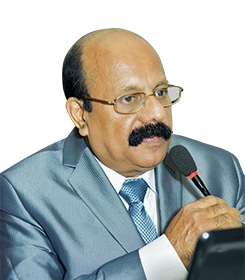
Vice Chancellor, Sree Sankaracharaya University of Sanskrit
The vision of your university talks about a blend of the study of Sanskrit with modern science and technology. How relevant do you find the use of technological tools in education?
It is very relevant for our university to link with modern science and technol- ogy. Sanskrit is the first language accept- able to computer software. Unfortunate- ly, we have not yet exploited the scope of this language in technology.
There has been a concerted push from the HRD ministry towards technology-enabled learning. How have they progressed at your institute?
The steps initiated by the HRD minis- try in this regard are appreciable. We are taking steps for its implementation. However, due to lack of funds, the prog- ress in this field is slow.
How do you view the impact of the use of technological resources on the quality of education?
Without the use of technology, develop- ment becomes slow. To attain progress, de- velopment of new technology is essential.
What are the challenges with regard to the introduction of ICT in education?
As a state university, we have a process where we need to obtain permission from the government. All this (engage- ment with private players) depends on fund allotment.
The Game Changers
Schools, colleges and institutions of higher learning are not what they used to be five years ago. Today’s classrooms are undergoing a huge transformation, thanks to the use of digital technology by schools and higher educational institutes. The nominees and the award winners at the recently concluded World Education Summit (WES) 2014 reflected this emerging trend. The WES Awards 2014 recognised several initiatives and developments at the grassroots that will ignite minds, skill Indians better and aim for a sustainable environment. These ideas that we hear succeeding today are a result of a vision that the best brains had a few years ago. However, the scale at which we are witnessing this revolution has been possible only due to the innovative learning solutions eyeing 70 million students as their potential market. Innovation and competition in the solutions market is fuelling education and propelling them into an higher orbit. Those who miss the bus now may not see themselves grow or contribute to India’s growth story. We have witnessed the emergence of several niche players dedicated to providing innovative solutions to enhance outcomes in education. With a staunch belief in last mile connectivity, the WES Awards recognised the importance of government initiatives in several verticals. Here is a look at the awardees at the prestigious World Education Summit held at Hotel Eros, New Delhi, on August 7-8, 2014.
Government Initiatives in Education
Boosting Agronomy
Organisation: Kerala Agricultural University e-Agri-Tech Platform for Open and Distance Education.
Website: www.celkau.in
Project: Centre for e-Learning.
Description: Speedy dissemination of timely knowledge in English and Malayalam, information and advice related to farming practices, technology and business.
Target Group: Farmers, extensionists, researchers, students, line departments, commodity boards, importers and exporters of farm commodities, private agencies, input dealers, SHGs, Farmers’ Consortiums, NGOs, LSGs, job seekers, job providers.
Achievement:
The end-users span all over the world.
India’s First University on Cooperatives
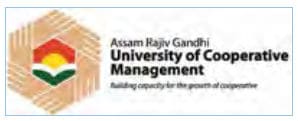
Organisation: Assam Rajiv Gandhi University of Cooperative Management.
Website: www.argucom.org.in
Description: To establish state-of-the -art facilities for Cooperative education and training to sustain the cooperative movement.
Target Group: Students from Assam, Delhi & Shillong.
Achievement:
The Assam Rajiv Gandhi University of Cooperative Management commenced on 28th December 2010 and it is the first University in India dedicated to cooperatives’ studies.
Empowering Rural India through Digital Learning
Organisation: CSC e-Governance Services India Ltd.
Website: www.cscacademy.org
Project: E-Inclusion.
Description: Innovative online and off-line Learning Management System to cater to the rural needs.
Target Group: To train and empower 45,000 rural SC/ ST Women beneficiaries across 12 States.
Achievements:
• Scenario based local language eContent and interactive learning through Learning Management System.
• Blended learning approach with large emphasis on self-learning.
• Regular tracking of the learning progress and completing the training within stipulated time.
• Online monitoring of the beneficiary registration, learning progress, course completion, etc. with the click of a button.
Making Higher Education Affordable
Organisation: Karnataka State Open University.
Partner: Schoolguru Eduserve Pvt Ltd, Mumbai.
Website: www.karnatakastateopenuniversity.in
Objective: Online programmes to ensure access to higher education at an affordable cost.
Target Group: Students.
Achievement:
Inclusiveness in Education through open learning.
Learn Anytime, Anywhere
Organisation: The M.S University of Baroda,Vadodara.
Website: www.msubaroda. ac.in
Project: E content generation of Adult and non-formal education courses.
Partner: This project was sponsored by MHRD, New Delhi, under NMEICT (Sakshat) initiatives for E-Content development.
Description: Technological innovations and rapid economic growth have created demands of skilled workers. The Institute is making all round development through quality education.
Target Group: Students.
Achievement:
Each course is divided into small modules.
Marching Towards Knowledge Society
Organisation: NIIT Ltd, Thimpu, Bhutan
Website: www.niit.com
Project: Chiphen Rigpel (Enabling a Society Empowering a Nation)
Objective: Aims to provide IT Knowledge to citizens in Himalayan Kingdom.
Description: Provides IT skills for policy makers, empowers teachers and provides IT skills to youths.
Target Group: All Bhutanese Citizens
Achievements:
• Enabling E-Governance, Extensive Integration of ICT in Education, successful indigenization and knowledge transfer.
• Demonstrated impact of playground learning stations on english, science and math scores.
Best Private University in North India
Imparting Quality Education
Organisation: Amity University, Rajasthan – Best Private University
Website: www.amity.edu/jaipur/
Description: Amity University Rajasthan is part of the Amity Education Group, which has more than 80,000 students, 3500 eminent faculty and scientists, 150 Institutions of Excellence and conducts over 240 Programs in campuses spread over 13 cities across India.
Target Group: Indian and International students.
Achievement:
Amity has under its umbrella a wide range of activities apart from education that underlines its vision of nation building. At Amity, the core faculty comprises distinguished academicians from the best institutions and leading professionals from the corporate world with rich industry experience.
Innovation in Open and Distance Learning
A Voice For The Voiceless
Organisation: Dr C V Raman University, Bilaspur
Project: Literacy campaign through community radio in Central India on legal, health and educational rights.
Website: www.cvru.ac.in/
Project: Literacy campaign through community radio in Central India on legal, health and educational rights.
Target Group: Tribals and socially back- ward people in Kota.
Achievement:
Free Radio sets distributed to increase wider accessibility to learning.
Use of Technology in Teaching and Learning in Higher Education Institutions
Stress Free Learning
Organisation: Bannari Amman Institute of Technology.
Project: Creative Learning Methodology (CLM).
Website: www.bitsathy.ac.in/
Description: CLM is a student centered approach. It consists of six major steps namely alpha breathing, evocation & subject introduction, brain activation, reading and discussion by students, drawing mind map by students and faculty, presentation of summary by students.
Objective: Engage every student in creative learning.
Target Group: Students.
Achievements:
• Application oriented learning
• Personality Development and Self-learning ability.
Technology Integrated Education
Organisation: Dr KN Modi University, Rajasthan
Projects: Use of Technology in Teaching and Learning by Higher Education Institution
Website: www.dknmu.org
Description: DKNMU uses cutting-edge technology to improve transparency, convenience and to sharpen the student’s professional skills to improve their spirit of inquiry.
Partner: ERP has been put in place by Ellora Eduventures Ltd.
Target Group: Students
Achievement: DKNMU is selected to participate in the QEEE Pilot program in the first phase of 100 Colleges/Universities.
Interface between Academia-Industry
Preparing for Future
Organisation: Ganpat University, Gujarat.
Project: Preparing Industry Ready Employable Skilled manpower.
Website: www.ganpatuniversity.ac.in
Description: The project is aimed to promote industry linked programs, to promote research & innovation by filling the industry – academia gap, to develop competent skilled manpower ready for employment.
Target Group: Students.
Achievements: GU offers unique industry-focussed programs with strong industry linkages by involving industry in programs & content designing, class room delivery, resource development, research and faculty development.
Technology in Testing in Assessments in Higher Education Institutions
Managing Examinations for Error-Free Evaluvation
Organisation: Sri Venkateswara Institute of Medical Sciences & NIMHANS.
Website: www.svimstpt.ap.nic.in
Project: Transformation in Examination systems.
Description: Migrating examination process from pen and paper to computer-based model in colloboration with NIMHANS.
Target Group: Students and teachers.
Achievements:
• Error-free examinations, benchmark for medical entrance examinations.
• Streamlining processes has ended in faster results.
Technology Solution Provider
New Tools for Evaluation
Organisation: TRS Forms And Services Private Limited, Chennai
Website: www.trsforms.com
Project: Auto Dummy Numbering Process
Description: The process which was manually done in all Universities and education boards is now automated with this technology. This has proved to be a boon with the increase in volume of students.
Target Group: Educational institutions
Achievement:
Initiative has automated the process of laborious evaluavation of examination sheets.
Global Collaborative Learning
International Exposure Programme
Organisation: Hindustan University, Chennai.
Website: www.hindustanuniv.ac.in
Project: Global Exposure to Business School Students.
Description: Enriching learning experience in foreign universities and learning to be a global citizen.
Objective: The faculty-led study abroad program provides a uniquely immersive international experience.
Target Group: Teaching faculty and students.
Achievement:
• Global Networking
• International placements in global MNCs.
Global Exposure, Global Learning
Organisation: Indian Institute of Technology, Gandhinagar.
Website: www.iitgn.ac.in
Project: Globalising the IIT Gandhinagar Curriculum. Strives
Description: Undergraduate students receive study abroad opportunities due to established partnerships and exchanges with international institutions besides a vibrant visiting faculty.
Target Group: Students
Achievements:
Strives to expand collaborative classroom offerings with student exchanges and joint and simultaneous course offerings with international institutions.
Public Private Partnership in Higher Education
Nation Building Exercise
Organisation: Gujarat Technological University.
Website: www.gtu.ac.in
Project: Personality Development Program I-Become–an educational service provider specialising in nation and citizenship building initiatives. The project is funded by the Adani Group as a part of their CSR initiative.
Description: To inspire the students to develop a larger vision of their own career and nation building.
Target Group: Teachers and Students
Achievement:
Bringing in a ‘purpose-orientation’ into the graduates of the country rather than just an ‘examination orientation’.
Innovation by Engineering Institutes
Innovation Initiative
Organisation: SAL Institute of Technology & Engineering Research.
Website: www.sal.edu.in
Project: Hybrid Desert Cooler.
Description: It is basically a combination of an air cooler and air conditioning.
Objective: The main aim behind this venture is generation of education and research as a blend for Rajasthan at large.
Target Group: From commercial to non-commercial zone. Achievement: Low power consumption, cools at lower cost.
Achievement:
Low power consumption, cools at lower cost.
Teach Better, Learn Better
Organisation: Padmashree Dr. D Y Patil Institute of Engineering & Technology.
Website: www.engg.dypvp.edu.in
Project: Class for Learning.
Description: Boring lectures were replaced by interactive learning by involving every student.
Target Group: Academically weak students .
Achievements:
• Increase in attendance
• Better academic results and team work.
Skilling Students
Organisation: Chiripal Charitable Trust, Ahmedabad.
Website: www.scs.edu.in/Chiripal-Group.htm
Project: Innovating a guaranteed six months paid internship for better iIndustry relevancy & higher placeability.
Description: The internship provides the students an opportunity to test their interest in a particular career before permanent commitments are made. It develops skills in the application of theory to practical work situations.
Target Group: Target students of Shanti Business School.
Achievement:
A 100 per cent placement track record
for successive years since its inception.
Engineering Rural Punjab
Organisation: Swami Parmanand College of Engineering & Technology, Mohali.
Website: www.spcet.org
Project: To develop a technically sound skilled force in Punjab by making them technical compatible with the help of technologies like VOIP, Wi-Fi, higher speed internet facilities and smart class rooms.
Target Group: Rural youth.
Achievement: Generating jobs for the rural people.
Innovation in Open and Distance Learning
Digitally Simple
Organisation: SAL Lovely Professional University, Punjab
Website: www.lpu.in
Project: e-Connect
Description: User friendly online platform for Distance Education any time any where.
Target Group: Students
Achievement:
Currently handling 91,000 users with 20 terrabyte storage which is scalable to 180 terrabyte.
Virtual Classroom Provider
Smart Learning, Quick Learning
Organisation: AuthorGEN Technologies Private Limited – WizIQ Virtual Classroom
Website: http://www.wiziq.com
Project: To increase quality access to education for anyone, anywhere. It enables educators and learners from all over the world to connect with each other over internet in real-time.
Description: It is aimed at democratising education.
Target Group: Learners at all levels. Achievement: WizIQ hosts more than 4500 live classes daily in the WizIQ Virtual Classroom and has already served over one billion minutes of live online learning.
Enterprise Resource Planning
From Kerala to Kenya
Organisation: Foradian Technologies Fedena.
Website: www.foradian.com
Project: Multipurpose school management software.
Description: Installed in over 40,000 institutes world-wide and powers over 20 million students and teachers. It allows easy and complete customisation. Target Group: Schools.
Achievements:
Present in more than 100 countries, Fordian helped in implementation of Project Sampoorna of Education Department of Government of Kerala, to automate the system and process of over 15,000 schools in the state.
Startup Educational Institutions
Empowering Tribal Girls
Organisation: Himalayan University, Itanagar.
Website: www.himalayanuniversity.com
Project: Community oriented approach toward sustainable development in tribal region of Arunachal Pradesh.
Description: Offering quality higher education under the segment of career-oriented programs.
Target Group: Girl Empowerment
Achievements:
• 200 scholarships mainly for tribal girls.
• Introduction of E-learning.
School for Change
Breaking Sterotypes
Organisation: Royal Global School, Guwahati.
Website: www.rgs.edu.in
Project: Establishment of a world class progressive school in remote North East.
Target Group: North-East.
Achievements:
• Readiness of the society, parents and community at large to accept the initiative with an open mind.
• Encourage the individuality of every child and prepare them to face new challenges and urge them to seek originality.
• Build a sense of global citizenship through cross cultural dialogue, exposure to discussions on international issues.
Innovation in Education Practices
Imparting Quality Education
Organisation: American Institute of Enrichment.
Website: www.theaie.org
Project: Innovation In Pedagogical Practices.
Target Group: Schools.
Achievements:
The AIE aids schools in curriculum design and implementation with the latest techniques and effective methods of classroom implementation.
Testing and Assessment Solution Provider
Spicing It Up
Organisation: Ginger Webs Pvt. Ltd.
Website: www.gingerwebs.com
Project: Innovative softwares to evaluate exams done both on paper-pencil and online.
Description: Establishes student-centric, participatory classroom.
Target Group: Education Institutes.
Achievement:
First company to offer technology for taking assessment on paper, computer, mobile & tablet devices.
Technology Solution Provider
Engineering Excellence
Organisation: Globarena Technologies Pvt Ltd.
Website: www.globarena.com
Project: Designed to facilitate self-paced learning, the content is accessible 24 x 7 in the college LAN or over Internet and on various devices including tabs.
Description: Establishes student-centric, participatory classroom.
Target Group: Engineering Faculty and Students.
Achievement:
Implemented in 2 Universities JNTU Hyderabad and JNTU Kakinada. Reached out to over 4.6 lakh students spread across over 500 colleges.
Innovation in Education Practices
Self Paced Learning

Organisation: Impartus Innovations Pvt. Ltd.
Website: www.impartus.com
Project: BlueBook Lecture Capture – Innovative Technology which brings videos into mainstream learning.
Description: Taking learning beyond classrooms.
Target Group: Students
Achievement:
Learning available on all popular devices (laptops, tablets, mobiles) and platforms (Android, iOS, Windows).
Competition Master
Organisation: Mahendra Educational Pvt Ltd.
Website: www.mahendras.org
Project: Online mock test provider for different competitive examinations. prestigious Educational Institutions across India.
Description: DIGIUNIV Education Management Solution is a Web-based Online ERP Software which is used by prestigious Educational Institutions
across India.
Target Group: Job seekers.
Achievement: Four lakh candidates registered on a pan-India level.
Enterprise Resource Planning
Going Digital: The Way Forward
Organisation: Nysa Communications Pvt Ltd.
Website: www.digiuniv.com
Project: DIGIUNIV: Give your Institution the digital Edge.
Description: DIGIUNIV Education Management Solution is a Web-based Online ERP Softwarewhich is used by prestigious educa-tional institutions across India.
Target Group: Universities as well as colleges.
Achievement:
Catering to 10 leading universities, implemented in more than 500 colleges and user base more than 10 lakh.
Non-Government Sector Initiative in Education
Virtual Classroom Provider
Transforming Teachers
Organisation: Transform Educational Society.
Website: www.sane.at.org
Project: Make teachers value added assets for their organisation and the nation.
Description: Lift standard of education by working upon teacher’s teaching style.
Target Group: Teachers.
Achievement:
Customised Workshop.
Smart Class Solution Providers
Learn to Retain
Organisation: Smartur 3D.
Website: www.smartur3d.in
Project: Experiential Learning using Augmented Reality for students to get first hand experience of science.
Description: The tool provides real life models covering science topics from class 6 to 12.
Target Group: School Students.
Achievement:
Presenting learning in 3D in a real life environment enhances better understanding and aids in long term retention.
Vocational Education & Training and Skill Development
Linguistic Proficiency
Organisation: Station-e Info Service Pvt. Ltd., Rajkot
Website: www.station-e.com
Project: Digital Language Lab for Skills Development.
Description: Digital Language Lab is a one-stop solution for training the youth for communication proficiency in English. Digital Language Lab is a man and machine combination providing training through innovative pedagogy and advanced technology.
Target Group: Students.
Achievement:
There are 30 Centres of Digital Language Lab across the country and more than 10,000 youth trained. Addressed the requirement of diverse sections of the market
Vocational Education & Training and Skill
Securing the Virtual World
Organisation: Cyberfort Technologies.
Website: www.trsforms.com
Project: Cyber Security Training and Consultancy.
Description: CYBERFORT Technologies is a Boutique Training and Consulting Firm specialising in Information Security. It seeks to impart quality Information Security programs that would equip Information Security professionals with the necessary tools and education to help them avert cyber-crimes.
Target Group: IT professionals, IT companies , government bodies, universities and colleges.
Achievement:
First company to launch MBA in Cyber security with strategic alliance with MGU.
Skills for Jobs
Organisation: NIIT and NSDC.
Website: www.niityuvajyoti.com
Project: Transforming Lives Through Technology Enabled Skill Development NIIT Yuva Jyoti.
Description: With more than 60 percent of the Indian population below the age of 25, there is a strong need to ensure that the youth of the country are adequately skilled as per industry re- quirements, in order to effectively utilise this ‘demographic dividend’ to power the growth of the Indian economy. NIIT Yuva Jyoti – Skills for Jobs, an initiative between NIIT and NSDC (a Public- Private Partnership (PPP) not-for- profit company promoted by the Union Ministry of Finance, with 49 per cent equity held by the Government of India) conceived with the vision of providing job oriented skills training of the highest quality to over 70 lakh youth by 2022, in different services sectors, which have a high potential for growth.
Target Group: Class X/XII pass, Diploma Holders.
Achievements:
• First of its kind Video Log technology for evaluating students performance.
• Impacted the life of over 15,000 students, and created a skill registry database of more than 1.2 lakh students.
• Placement with over 325 industry tie ups like Reliance Retail, Kapsons, Aditya Birla Retail, Sparsh (BPO), Vishal mega mart.
School Education
Green Initiatives by Educational Institutes
Green Campus of the Year
Organisation: Suryadatta Education Foundation, Pune.
Website: www.suryadatta.org
Project: The Foundation has embarked a dozen projects in order to make living on our planet sustainable.
Description: Clean and Green Environment.
Target Group: Pune and Maharashtra citizens.
Achievement:
Created an eco-friendly campus, tree plantation and drinking water project in Pune.
A Tool for Social Change
Organisation: Gundecha Education Academy, Mumbai.
Website: www.gundechaedu.org
Project: Zero Garbage School.
Description: Managing waste generated by it, instead of depending on municipality. Students are taught the segregation, pre-recycling procedures and composting in order to accomplish a successful waste management. It also emphasises the social responsibility of the school by explaining how the benefits from such waste management practices are passed over to the underprivileged sections of society.
Target Group: Students, parents and the neighbouring community
Achievement:
Several channels for recycling set up.
Creating a Better World
Organisation: Sir Padampat Singhania Education Centre, Kanpur.
Website: www.spsec.co.in
Project: Educating students about environment, conservation, recycling, renewability and reuse within a clean – green environment.
Description: To give a feel to students of being ‘In Nature’s Lap’ so that they may feel connected to the environment while attaining an education.
Target Group: Classes 1 to XII.
Achievements:
• Reducing the soil loss from erosion by developing lawns across the school campus.
• Adopting green practices by recycling and reuse.
• To reduce the soil loss from erosion by developing lawns across the school campus.
• Optimum utilisation of renewable resources.
Innovation In Pre-School Education
Best Practices in School
Organisation: Smartkidz Educare India Pvt. Ltd.
Website: www.smartkidzindia.com
Project: Emphasis on interaction between adults and children.
Description: To develop five major skills required for children i.e. Social, Physical,Intellectual, Cognitive and Emotional which we simplify as SPICE.
Target Group: Children between the age group of two to five and a half years
Achievements:
• Holistic development among children.
• Reduces stress in children
Enjoyable Learning
Organisation: School Of Scholars
Website: www.mgsnagpur.org.in
Project: The Hub System.
Description: Introduction of hubs for different subjects. Each and every child gets a chance to attend every hub and the activities are prepared well
in advance.
Target Group: Children between the age group of two and five years , Teachers & Parents.
Achievements:
• To teach the child in the way they will like and remember.
• At the beginning of each school year faculty discuss the challenges that are being faced by children and teachers.
• Children became more responsible and independent. They learned in each domain how to work alone and in groups.
Global Collaborative Learning Initiative
Learning for Life
Organisation: Manav Rachna International School.
Website: www.mris.edu.in
Project: The Learning Center approach
Description: Opportunities for hands on concrete learning, social interactions, real life problem solving, fine and gross motor development, literacy and numeracy and open-ended activities.
Target Group: Pre Kindergarten.
Achievement:
Children are happy to be in school.
Going Global
Organisation: G D Goenka School.
Website: www.gdgoenka.com
Project: Promoting the spirit of internationalism.
Description: With the aim of strengthening the spirit of internationalism in the school, GD Goenka School is collaborating with other schools in areas of best teaching practices and projects. Involving the entire school community in the initiative and imparting ICT training and educating everyone besides
coordinating, collaborating, collecting and submitting/ uploading reports/pictures on various media and web channels for the whole school.
Target Group: Learners of Grade 6 to grade 12.
Achievement:
Accredited with British council International School Award 2013-16 and there is an exchange programme with Oban High School. Oban, Argyll, Scotland.
Innovation in Pre-School Learning
Greening Future
Organisation: DCM Public School, Jammu.
Project: Experiential learning.
Description: Taking children for a nature walk in the middle of various fields, leaving them to play in the sand pit but monitoring side by side with the aim that children should understand and acquaint themselves with the environment and nature they are growing in.
Target Group: Pre-Primary school children.
Achievements:
• Learning by doing.
• Enhancing the curosity.
• Taking out the leadership.
E School initiative
Greening Future
Organisation: KMV Red Hills High School, Bangalore.
Website: www.redhillshigh.com, www.livingtree.com
Project: A secure social communication platform to improve parent involvement and community engagement.
Description: Schooling does not happen in a vacuum. We deal with parents, children and teachers. We deal with their emotions and apprehensions.
Target Group: Parents, students and teachers.
Achievement:
The project has been able to bring all the parents, students, teachers, school staff together and engage to create a vibrant community with a true sense of togetherness.
Full Use of ICT in School Management
Organisation: Cambridge International School – Dasayu
Website: www.cisdasuya.com
Project: Full use of ICT in School Management
Brief Description: There is full Use of ICT in School Management and imparting education, recognising its diverse uses with multi-pronged strategies to support movement towards a variety of educational goals.
Target Group: School Students.
Achievement: The project’s reach is all over India, as well as UAE. ICT has helped in extending the boundaries of the school as well as facilitate innovation.
Innovations in Pedagogical Practices
The Hub of Innovation
Organisation: Children’s Academy, Ashok Nagar Mumbai.
Website: sites.google.com
Project: Innovation in Pedagogical Practices.
Description: Transforming teaching and learning process.
Target Group: Education institutions like universities, professional examination bodies and education boards.
Achievements:
• Changing attitude of teachers from quantitative to qualitative teaching.
• Enthusiastic response from teachers and students.
Building Vocabulary
Organisation: Kothari International School Noida.
Website: www.kotharischool.edu.in
Project: Enhancing English-speaking skills through a reward system.
Description: To encourage students to speak in English.
Target Group: Grades 4 and 5.
Achievements:
• Students built up their vocabulary bank gradually and began showing interest in reading so as to improve their vocabulary.
• Students began correcting each other’s sentence structures while speaking leading to better grammar concepts, both in the oral as well as written work.
Excellence in Education
Organisation: Indus World School
Website: www.indusworldschool.com
Project: Innovation in Pedagogical Practices.
Description: The Practices include emotional corners in class, home visits by mentors, starting the day by setting the agenda and ending the day with a closure, QCT (Quality Circle Time) which encourages self discipline and self esteem.
Target Group: Children and parents
Achievement:
Google Apps have helped in creating effective communication channels. This has also helped reduce the use of paper.
Innovation in Science, Maths & Languages
Producing Polygots
Organisation: DAV Public School Sreshtha Vihar, New Delhi.
Website: www.davsreshtha.com
Project: Multilingualism.
Description: Multilingualism has become a way of life in our school as students are actively involved in the multi-lingual projects. The projects include the four languages taught in the school namely English, Sanskrit, Hindi and French.
Target Group: Class 5-12.
Achievements:
• Students are given ample opportunities to apply their knowledge in creative ways by giving them an exposure to activities like radio shows, crosswords, spell bees, skits and multilingual assemblies.
• Multilingual prayer has become a regular feature of the school.
Beyond Sites and Skies
Organisation: Ryan International School, Noida
Website: www.ryaninternational.org/risnoida/
Project: Innovation in Science Education.
Description: Efforts to sensitise the young minds with scientific temperament by using the universe and sky around us as one of the powerful tools. Our students have been actively participating in all astronomical events as members of the school astronomy club. This is one of the most interesting and regular events in which the students of our school are regular and active participants.
Target Group: Students of classes 6 to 12.
Achievement:
Students study about the asteroids and try to discover the undiscovered ones with the help of a software Astrometrica, USA.



